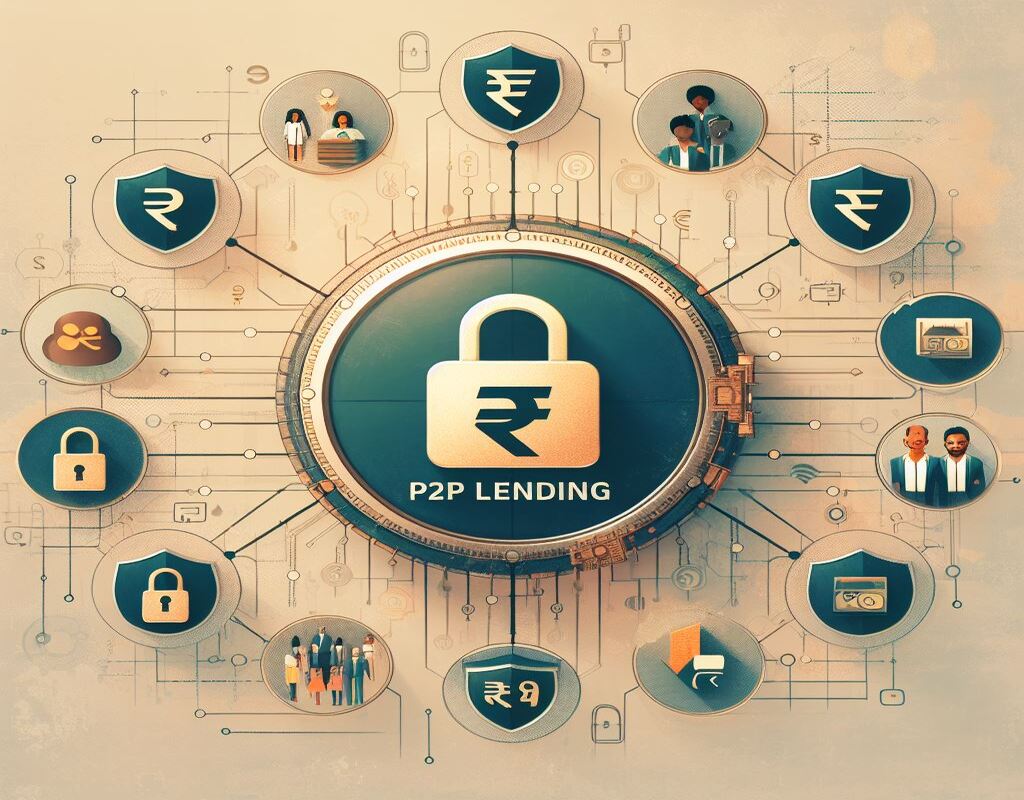Explore the landscape of peer to peer investment and discover whether P2P lending is safe in India. Learn about the safety measures, risks, and potential returns associated with P2P lending in the Indian financial market.
In India, the age-old practice of lending money within communities or extended families is undergoing a transformation with the advent of technology. P2P lending platforms are transforming the borrowing and lending landscape, shifting from traditional trust-oriented systems to a more organized and efficient process. This article explores the landscape of P2P lending in India, focusing on its definition, regulatory framework, key guidelines set by the Reserve Bank of India (RBI), and the efforts of platforms like Monexo to ensure a safe and accessible P2P lending experience.
What is Peer-to-Peer Lending?
Online platforms connect borrowers directly with lenders through peer-to-peer lending, also known as P2P lending. These platforms play a crucial role in screening borrowers based on creditworthiness and other critical factors, ensuring a level of trust between the parties involved. P2P lending provides borrowers with an alternative to high-interest loans by bypassing intermediaries, a departure from the traditional lending model employed by banks.
Regulation of P2P Lending in India:
The Reserve Bank of India (RBI) has taken a proactive approach in regulating Peer-to-peer lending to safeguard the interests of both lenders and borrowers. Recognizing Peer-to-peer lending as a category of lending, the RBI has established specific criteria for the operation of Peer-to-peer lending services. To operate legally, peer-to-peer lending platforms must obtain an NBFC-P2P license from the RBI. This regulatory oversight ensures that these platforms do not pose systemic risks to the financial sector.
Key RBI Guidelines for Peer-to-Peer Lending:
To provide clarity and protection, the RBI has set several guidelines for Peer-to-peer lending platforms operating in India. These guidelines serve as a framework to protect the interests of lenders and borrowers alike. Here are seven key guidelines established by the RBI:
1. Membership with Credit Information Companies: Peer-to-peer lending platforms must become members of credit information companies, sharing financial data to aid in assessing the creditworthiness of borrowers.
2. No Loan Guarantees: P2P lending platforms are prohibited from providing loan guarantees, emphasizing the importance of evaluating borrowers based on their creditworthiness, income, and other factors.
3. Lender and Borrower Limits: The RBI has set limits to control the scale of Peer-to-peer lending activities. At any given time, a lender can lend up to Rs.50,000,000 across all Peer-to-peer platforms, and borrowers can borrow up to Rs.100,000 across all platforms.
4. Net Worth Confirmation: Lenders looking to lend more than Rs.10,000 must present confirmation of net worth across all Peer-to-peer networks, certified by an active chartered accountant.
5. Maximum Loan to the Same Borrower: To prevent concentration of risk, the RBI mandates that one lender can only lend a maximum of Rs.50,000 to the same borrower across all peer-to-peer platforms.
How safe is P2P lending in India
The regulatory framework established by the RBI provides a level of monitoring and transparency, making P2P lending safer than unregulated alternatives. While risks exist, adherence to regulatory guidelines, careful consideration of risk ratings, and diversification of assets can help investors navigate the P2P lending landscape successfully.
The legal status of Peer-to-peer lending is clear when the regulatory framework is followed, and with a commitment to financial inclusion, P2P lending presents significant investment opportunities in India’s rapidly developing digital lending sector. Overall, P2P lending is a promising, secure, and entirely legal option for both borrowers seeking funds and investors exploring new paths of financial growth while adhering to robust regulatory controls.
Monexo’s Efforts for Safe Peer to Peer Lending:
Monexo, as a P2P investment platform, has taken significant steps to ensure the safety and reliability of its services. Here are some key aspects of Monexo’s approach:
1. Investment Possibilities: Monexo provides carefully designed investing options to obtain the best returns. With this technique, you can be confident that your money is being sensibly invested in thoroughly selected loans.
2. Diversification of Portfolios: Monexo allows you to expand investing portfolio beyond traditional market-linked securities. By spreading your investment across numerous loans, you can reduce the impact of defaults and decrease total risk.
3. Minimal Investment: Monexo understands that not everyone has a large sum of money to invest. As a result, the Monexo Grow has a low Rs 10,000 minimum investment requirement. P2P finance is a viable option for a greater variety of investors due to its ease of use.
Conclusion:
To sum up, peer-to-peer lending has surfaced as a secure and viable financial alternative in India, providing a substitute for conventional lending systems. The safety of your P2P lending investment is determined by a number of factors, including the platform you choose, your risk tolerance, and diversification.




